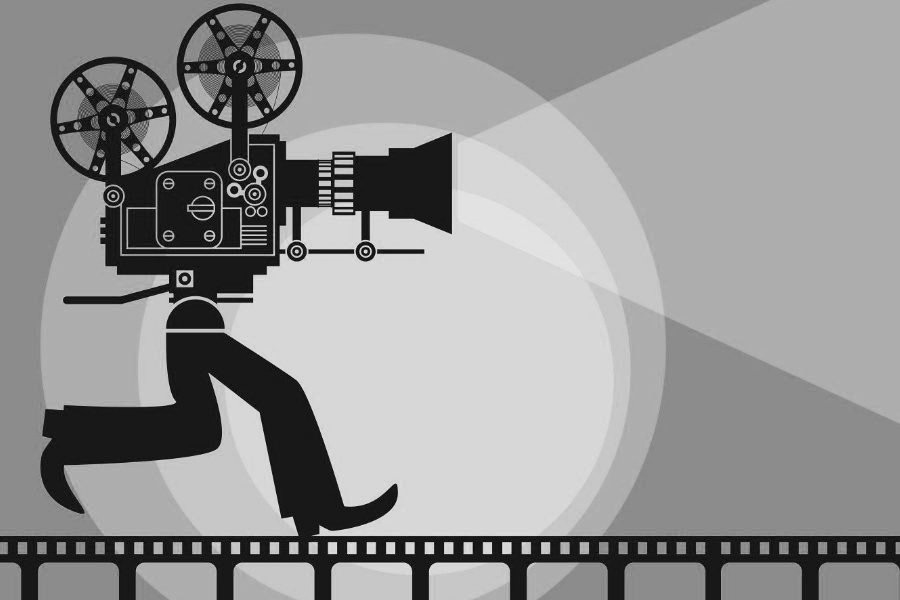How to make a good film
Before writing for screen, it is necessary to understand the language of cinema.
Basically language of cinema is thought to be visuals.But there is more to it than just visuals in the making of cinema
Cinema deals primarily with TIME and SPACE. You can slow or fasten time, extend or compress space. You can show the infinite in one big screen ( Interstellar )or you can show a small fly (Eega/Makkhi) occupying the entire screen.In cinema when we tell a story of sixty to seventy years or even more than that into two to three hours. Cinema has limits beyond imagination to compress space and time.
Technically speaking “Space” is extended or compressed by using camera lenses of varied frame sizes.
Time could be extended by slow motion and compressed by fast motion.
We see all this regularly happening in motion picture all the time but there is a need to go beyond this.
Robert Bresson ( French Film Maker) has showed us in his cinema but only Mani Kaul( Rajasthan,India) has done this in Indian cinema. Mani kaul was inspired by Bresson and Andrei Tarkovsky ( Russian Film Maker). He was also influenced by his teacher Ritwik Ghatak (West Bengal,India) and his Drupad Guru Zia Moinuddin Dagar.
Time really physically cannot be extended or compressed. But mentally we always feel this effect. When waiting for loved one, time seems to be very long and when lovebirds are together it seems time is moving very fast. Therefore mental time may be compressed or extended in case of showing mental
status of a person. In India only Mani Kaul dared experiment this in almost all his films.
He also believed dialogues with all modulation etc. is not the language of cinema. It is the language of Theater. Even acting is a tool of Theater not cinema. He always told his actors not to act but be there as all other objects like trees etc. are in the frame.
Film critic Andre Bazin had very strong feelings on the subject of montage and realism. In his article ‘The Evolution of the language of Cinema’ from the start he makes a distinction between ‘those directors who put the faith in the image and those who put their faith in reality’.
He argues against any device that can be used to manipulate the audience’s perception of the scene and its potential to remain ambiguous and open to interpretation.
According to Sergei Eisenstein Languages of Cinema emerges from juxtaposition of two shots even totally unrelated shot can convey a third meaning.
We have to take into consideration that both these Master Filmmakers belong to silent era hence they do not talk of dialogues.
Cinema basically is a visual medium. Music and sound may help bring the meaning in narration of a story but cannot be the Language of Cinema.
Let us see from what sources cinema derives its total form.
Cinema came into being in late 18 th century. Before cinema existed other art form such as Painting, Sculpture, Novels, Stories and Theater, Music, dance, etc.
Therefore Cinema borrowed from all art forms but differed in their use and developed its own form using them to its advantage.
So, Theater in cinema is not as the actual theater or Music is not as Music as independent art form. Cinema brings subtlety into whatever it uses.
The question arises then what exactly is or could be then language of cinema?
Language for cinema is a mix of all the element of art form in very subtle way.
Dialogue in cinema cannot be said as it is said in Theater. Music is not just songs but other sound effects and background music.
Painting is not painting on the canvas but frame containing all the elements of painting.
A good example of this could be seen in a film “The Iceland” (1960) by Maneto Shindo a Japanese director. All frames static or moving look like painting. Music plays only in the background only one melody used by change in tempo and number of instruments.
Even time and Space, as we discussed in the beginning of the article could be used not as real time or real space but a cinematic one.
In Dances, the dancer performs in a limited space but creates extra space by moving his/her hand. In Kabuki Theater, a performer even shows higher octave simply by showing his /her hands above his/her head. Music, especially classical music plays in limited time but giving impression of extended time or shortened time in the Alaap or Taan.
Let us come back to Mani Kaul. Mani Kaul in his films does not use real time but extended one. In his famous film ‘Uski Roti’ we see a fruit broken from the branch falls on the ground after a prolonged time as usually is not seen.
In the opening scene wife waits for her driver husband to arrive and Mani Kaul holds his camera on the face of the wife for a long time, long enough for viewers to get bored but is not the same boredom is experienced by the wife?
Mani kaul is not interested in telling a story, for him cinema is a medium of sharing experiences. All through his life he was in search of the Language of Cinema. Can it be found? One can and one should try to find the Language of Cinema if we love Cinema.
By Shankar Madkekar
Shri. Shankar Madkekar is an award winning film maker, who has produced and directed many films. He is the director of IFVT and conducts film making workshops









Leave a Reply